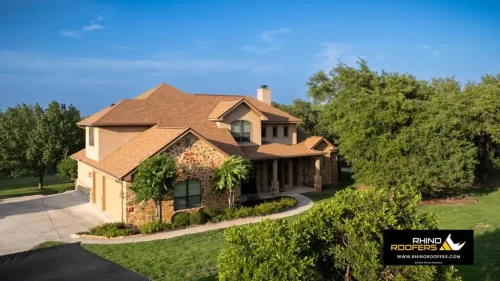Did you know that nearly 65% of homeowners see their house as their biggest financial asset? Your home isn’t just a roof over your head it’s your sanctuary, a reflection of your hard work, and a vital part of your life.
Keeping it well-maintained protects your investment and ensures a safe space for your family. Keeping it in excellent condition requires consistent care and attention to detail. Studies show that addressing minor structural issues early can save homeowners up to 30% in repair costs over time.
Structural integrity is about preserving the long-term value of your biggest investment. Let’s explore practical tips that will help you preserve the strength and stability of your home.
Inspect and Maintain Your Roof Regularly
Your roof is your home’s first line of defense against the elements. Over time, it can face wear and tear from weather, debris, and age. Regular inspections are crucial to catch minor issues before they turn into costly repairs. Look for loose or missing shingles, leaks, and signs of water damage. Addressing these problems promptly will prevent further damage to the underlying structure of your home.
If you’re unsure about the condition of your roof, consider professional roofing repair services. They can identify hidden issues and provide expert solutions that protect your home’s structural integrity.
Manage Moisture and Drainage
Moisture is one of the biggest threats to a home’s structure. Excess water can lead to rot, mold, and weakened foundations. Ensure your gutters and downspouts are clean and functional, so they direct water away from your home. Regularly check for signs of water pooling around your foundation and address drainage problems immediately.
Inside the home, pay attention to areas prone to moisture, such as bathrooms, kitchens, and basements. Fix leaks promptly and consider using a dehumidifier in damp areas to keep humidity levels under control.
Reinforce Your Foundation
The foundation is quite literally what your home stands on. Over time, natural settling, soil movement, and water damage can cause cracks and instability. Regularly check your foundation for cracks, uneven flooring, or sticking doors and windows; these could be signs of shifting or structural stress.
Simple steps like sealing cracks, ensuring proper drainage, and landscaping thoughtfully can protect your foundation from unnecessary stress. For more significant concerns, consulting a structural engineer is always a smart move.
Keep an Eye on Walls and Ceilings
Cracks in walls or ceilings might seem harmless at first, but they can signal underlying structural issues. Pay close attention to changes over time. Hairline cracks are often cosmetic, but larger ones or those that grow in size may require professional attention. Regular painting and sealing can also help protect these surfaces from moisture and wear.
Maintain Your HVAC and Ventilation Systems
Your home’s HVAC and ventilation systems are critical for preventing structural damage caused by excess moisture and temperature fluctuations. A poorly ventilated attic, for instance, can trap moisture and lead to mold growth or rot in wooden beams. Schedule regular maintenance for your HVAC system and ensure proper ventilation in all areas of your home.
Additionally, ensure insulation is adequate in key areas like the attic and walls. Proper insulation not only helps with energy efficiency but also minimizes condensation-related issues that could weaken the structure.
Protect Against Pests
Termites, ants, and rodents can cause severe damage to your home’s structure if left unchecked. Conduct routine inspections for signs of infestations, such as droppings, wood shavings, or hollow-sounding wood. Keep food sealed, remove clutter, and seal entry points to make your home less inviting to pests.
If you suspect an infestation, address it quickly with professional pest control services. Prevention is always more effective (and less expensive) than dealing with extensive damage later.
Regularly Check Windows and Doors
Windows and doors contribute to your home’s structural integrity by ensuring the building is secure and weatherproof. Over time, their seals can deteriorate, leading to drafts, water leaks, and structural strain. Inspect your windows and doors for cracks, gaps, or rot in the frames.
Recaulking and resealing these areas can go a long way in preserving their integrity and reducing stress on surrounding walls. Energy-efficient upgrades, like double-pane windows, can also provide added protection and savings on utility bills.
In Conclusion
Preserving the structural integrity of your home is about creating a safe and comfortable environment for you and your family. You need to keep an eye on key areas like the roof, foundation, and ventilation systems. Doing so will help you prevent small issues from becoming big headaches. Remember, investing time and effort into maintenance today pays off with peace of mind and a home that stands strong for years to come.

Leave a Reply